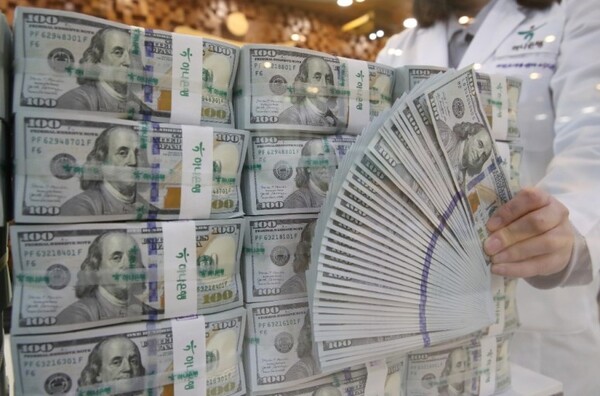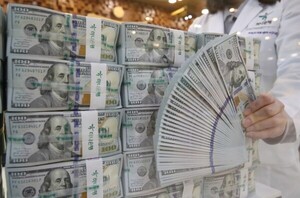
Foreign investors posted a net outflow of more than US$1.4 billion in Korean securities in September. September marked the second consecutive month of a net outflow.
Foreigners posted US$1.43 billion in a net outflow from the Korean stock market in September, according to a report titled “Financial Market Trends in September 2023” released by the Bank of Korea (BOK) on Oct. 13. Foreign funds showed a net inflow for six consecutive months from February to July this year, but reversed to a net outflow of US$1.7 billion in August. This marked the second consecutive month of a net outflow. Both the Korean stock and bond markets saw outflows for two months running.
Foreigners net-sold stocks worth US$1.33 billion in the Korean stock market in September. This was due to concerns about an economic slowdown in China and a delayed recovery in the Korean semiconductor industry. It increased from a net outflow of US$910 million in August. The bond market also saw a net outflow of US$100 million. Despite the maturity of large amounts of bonds, increased reinvestment in bonds helped reduce a net outflow from US$133 million to US$100 million.
The euro, the British pound, and the Japanese yen fell 2.0 percent, 2.8 percent, and 2.5 percent against the U.S. dollar, respectively. Emerging market currencies were also weaker than the U.S. dollar. The Korean won depreciated by 2.2 percent while the Chinese yuan fell by only 0.2 percent due to an intervention by foreign exchange authorities. The Korean won climbed 0.7 percent to 899 won per 100 yen. Against the yuan, the won descended by 1.3 percent to 183.58 won. The Korean won outweighed the Japanese yen but was weaker against the Chinese yuan.
Non-residents’ net purchases of non-deliverable forwards (NDFs) amounted to US$2.76 billion in the third quarter. This was a sharp decline of US$9.04 billion from US$11.8 billion in the previous quarter. Net purchases of NDFs by non-residents have the effect of driving up the exchange rate, forcing Korean foreign exchange banks to buy U.S. dollars in the spot market through sell-and-buy transactions (selling forwards and buying spots). By month, NDFs reached US$4.41 billion in net selling in July, US$8.31 billion in net buying in August, and US$1.14 billion in net selling in September.
The three-month won-dollar swap rate, a measure of U.S. dollar liquidity, was -2.12 percent, down 0.04 percentage points from -2.08 percent at the end of August. This suggests that the cost of securing U.S. dollars increased. At the same time, the three-year won-dollar swap rate inflated by 0.14 percentage points to 3.13 percent. This was due to a 0.24 percentage point increase in the Korean treasury bond yield despite downward pressure from forward exchange selling by heavy industry companies. The three-year Korean treasury bond rate rose to 3.95 percent on Oct. 11 from 3.71 percent at the end of August. The two-year U.S. treasury bond yield rose by just 0.12 percentage points to 4.98 percent from 4.86 percent over the same period. It is highly likely that an inducement expanded for arbitrage trading, in particular, arbitrage trading of short-term Korean treasury bonds.
But bond yields soared with the long-term treasury bond yield taking the lead. The ten-year U.S. bond yield rose by a whopping 45 percentage points to 4.56 percent from 4.11 percent. The ten-year Korean treasury bond yield also followed suit, climbing to 4.142 percent on Sept. 11, up 0.321 percentage points from 3.821 percent at the end of August.
Meanwhile, Korean banks’ mid- to long-term borrowing spreads remained stable in September. The short-term borrowing rate was 34 basis points (1 basis point = 0.01 percentage point), slightly higher than 23 basis points in August. This was due to extended borrowing periods and a decrease in shares of borrowings centered on state-run banks with relatively high credit worthiness. On the other hand, their mid- to long-term borrowing spreads was 75 basis points, similar to 74 basis points in the previous month. The credit default swap (CDS) premium on foreign exchange stabilization bonds was 32 base points, similar to the previous month (31 base points).



